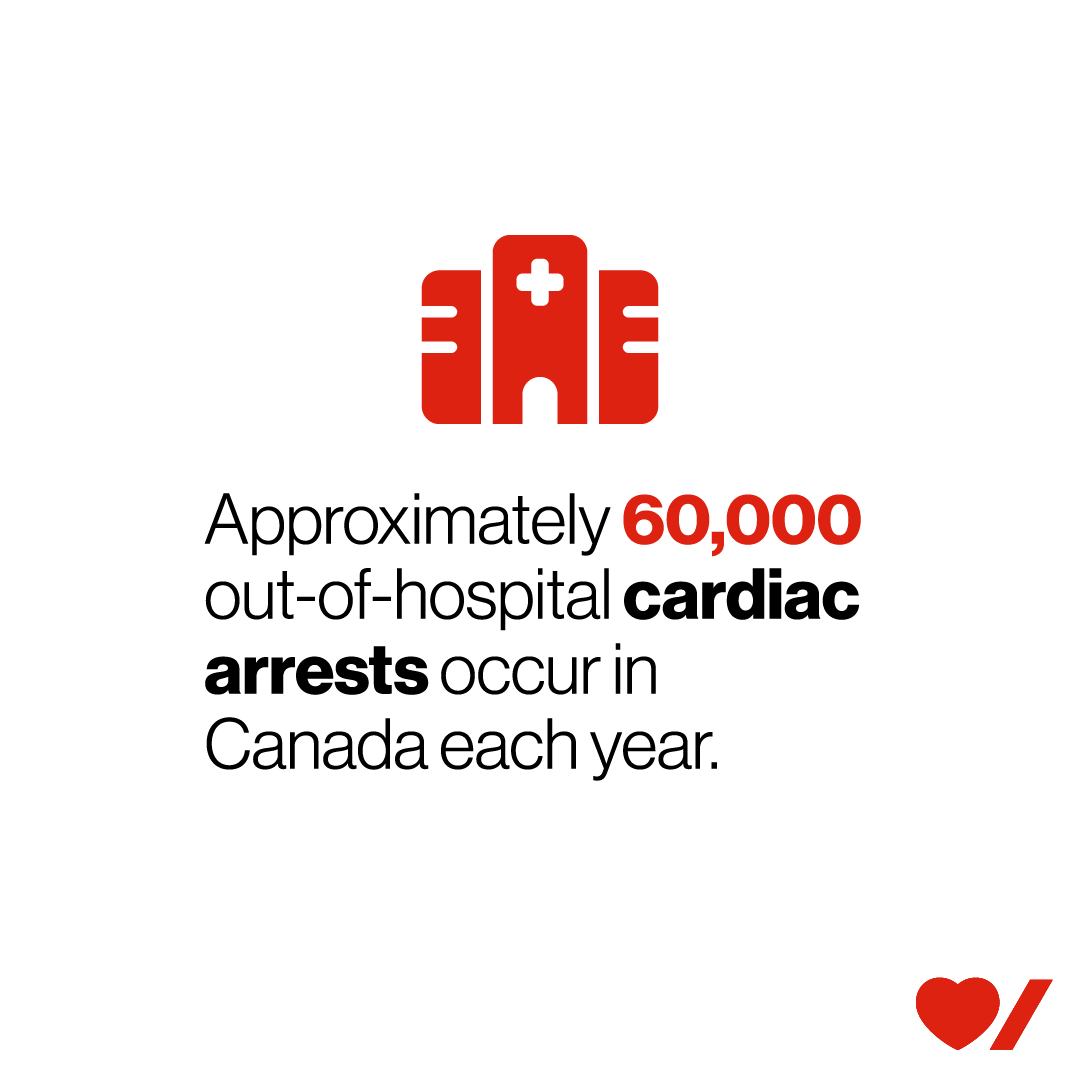Heart disease and stroke can affect anyone, including those we love. That’s why Heart & Stroke continues to work to keep families together, longer. Recently, they have spotlighted a critical issue that can happen to anyone, anywhere, at any age: cardiac arrest.
The number of cardiac arrests — a medical emergency when the heart stops beating suddenly — is higher than previously estimated. A new report from Heart & Stroke shows that 60,000 out-of-hospital cardiac arrests happen in Canada each year — that’s one every nine minutes.
What’s more is that only one in 10 people who experience a cardiac arrest outside of a hospital setting will survive.
When someone goes into cardiac arrest, only fast action will save their life – every second counts. CPR keeps the blood pumping to keep the brain alive and an automated external defibrillator (AED) will shock the heart to help it restart.
Learn how to save a life in 90 seconds
Do you have a couple of minutes? That’s enough to learn the basics of CPR. Watch this short video to learn how to perform hands-only CPR then, see how to use an AED. Together, these steps can double a person’s chance of survival.
Here are the three steps to remember:
- Call 9-1-1 for help and shout to another bystander to get an AED (automated external defibrillator), an easy-to-use, portable device that can restart the heart of a person who is in cardiac arrest.
- Start CPR (cardiopulmonary resuscitation) to keep the blood circulating. Place the heel of your hand in the centre of the person’s chest, interlocking the fingers of your other hand on top, and push hard and fast. Apply 100 to 120 beats per minute by thinking of the beat of a song like Stayin’ Alive.
- Use an AED as soon as one is found. Heart & Stroke knows that the easiest way to improve the survival rate of out-of-hospital cardiac arrest is to create a culture of cardiac safety. This includes teaching people in Canada to recognize the signs of cardiac arrest, equipping them with the skills and confidence to act should they witness one, increase the availability of publicly accessible AEDs and funding clinical research to discover ways to improve survival rates and outcomes.
If you’d like to take the next step in joining a new generation of lifesavers, Heart & Stroke offers CPR courses. Click here to find a course near you.
To learn more about Heart & Stroke’s work, visit heartandstroke.ca. Together, we’ll beat cardiac arrest.
To improve survival rates and outcomes, it’s critical to be able to know how to recognize and respond to cardiac arrest. You never know when this information could help you save the life of a friend, family member or fellow member of the RUN4Hope community.

